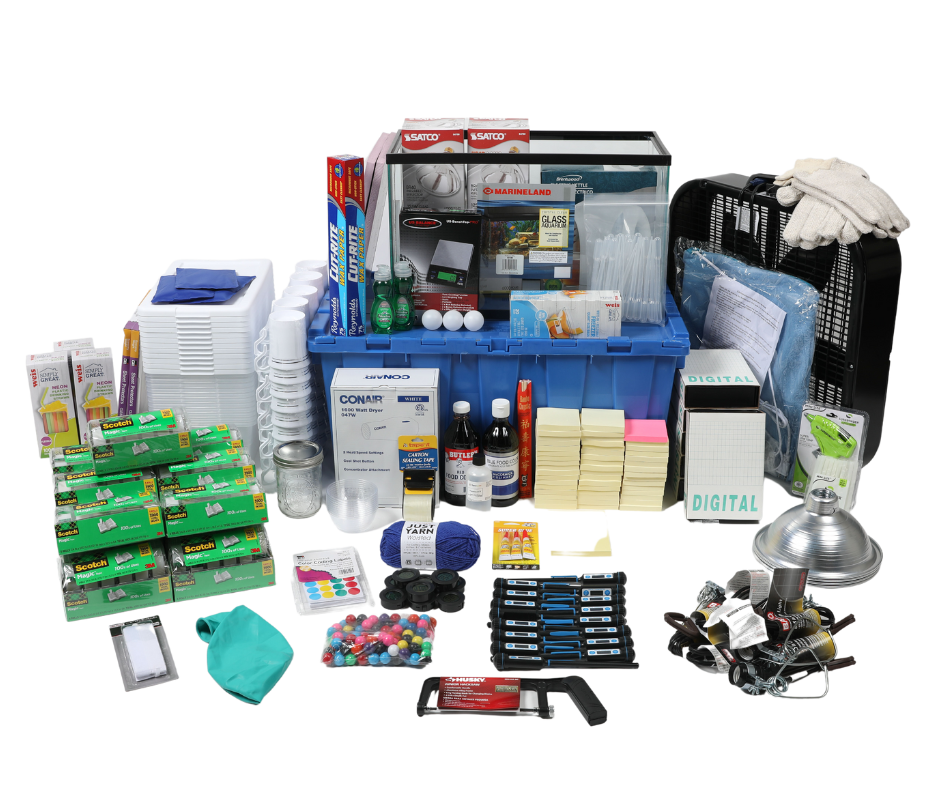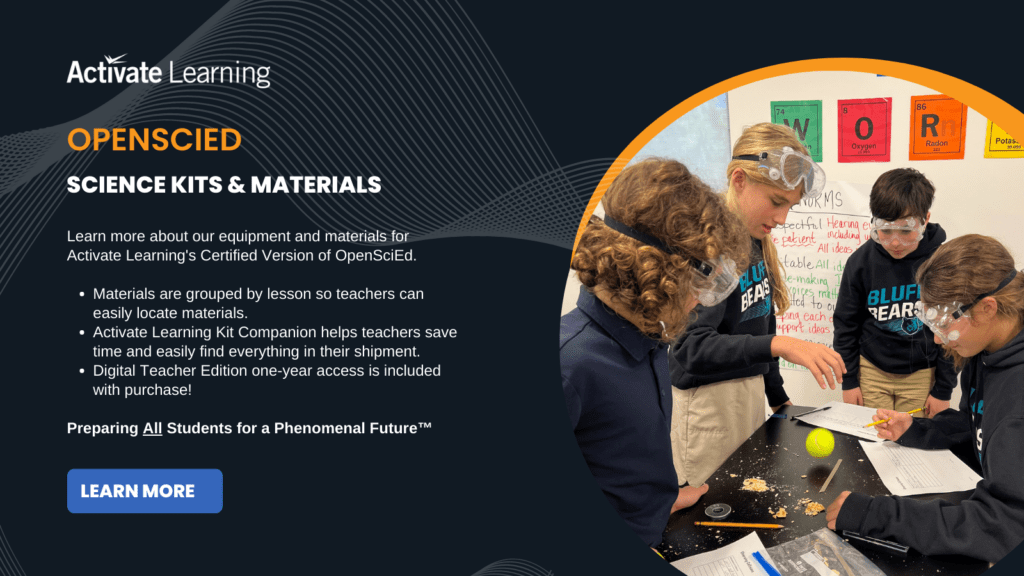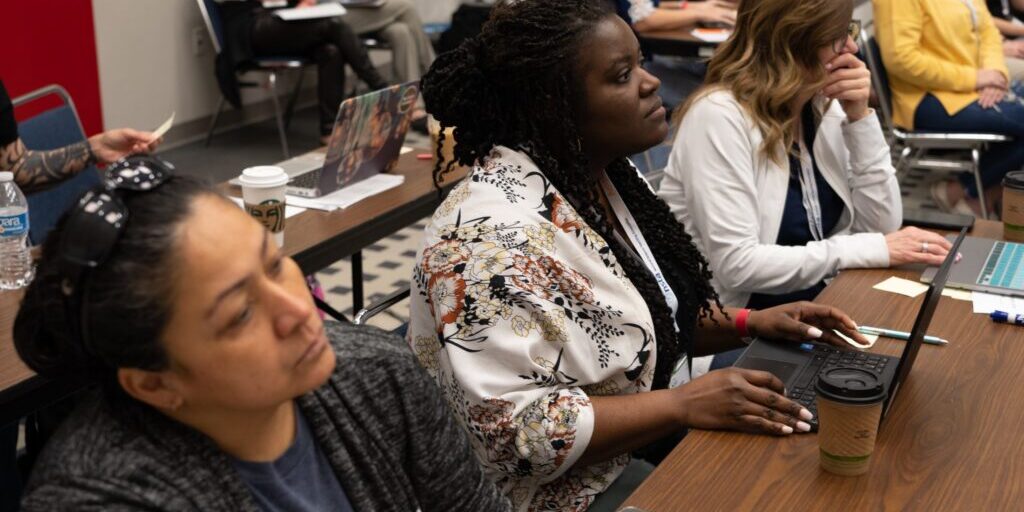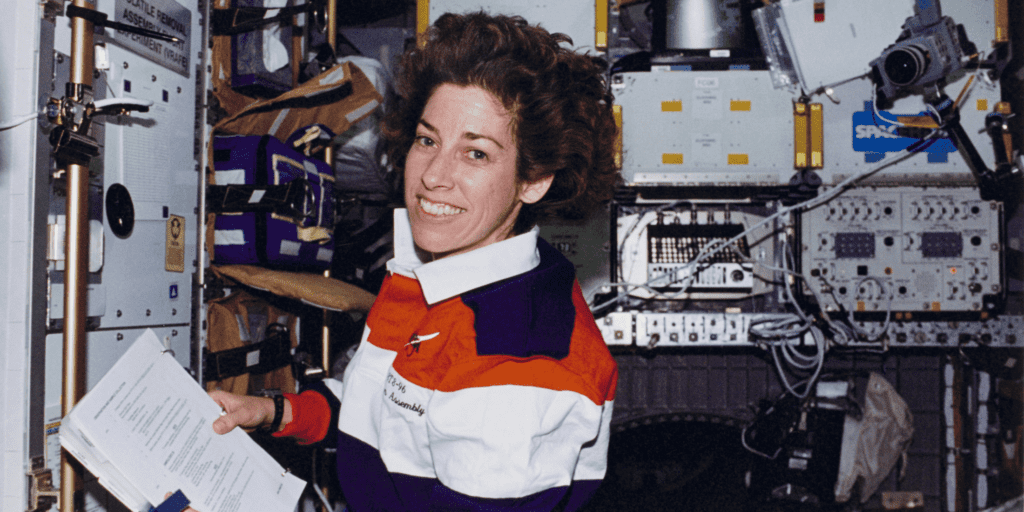The Secret Sauce in Our Science Kits: Creating Win-Win Solutions for Teachers and School Districts (part 2)

As with any good recipe for success, there are always a few hurdles to jump. When asked about the challenges teachers and school districts face finding the right science kits and implementing them successfully, Dana Turner (Operations Manager at Activate Learning), paints a vivid picture of the challenges teachers and school districts experience, identifying two main areas of concern: classroom management and budget constraints.
Welcome Back!
Welcome back to the second installment of our three-part series on the fascinating world of classroom science kits!
In the first blog post of our series, we took a fun trip down memory lane, exploring how science kits have evolved over time and the innovative ways they promote student empowerment through hands-on learning today. To guide us through this deep dive series, we tapped the expertise of Dana Turner, Operations Manager at Activate Learning, who enlightened us on the creative process behind developing science kits that spark student curiosity and a love of learning science.
This time, we're zooming in on the challenges that districts and teachers face when it comes to selecting, managing, and implementing science kits. But don't worry, it's not all obstacles and hurdles. We're also going to show you how we at Activate Learning turn these challenges into wins for teachers, schools, and most importantly, the students.
Let's dive right in!
Unpacking the Challenges
Navigating the world of science kits can be a daunting task for teachers and school districts, especially those looking to successfully innovate their STEM programs district-wide with NGSS-aligned curricula.
As with any good recipe for success, there are always a few hurdles to jump. When asked about the challenges teachers and school districts face finding the right science kits and implementing them successfully, Dana Turner, who has over 25 years of experience developing and shipping science kits to schools across the country, paints a vivid picture of the difficulties educators experience, identifying two main areas of concern: classroom management and budget constraints.
Teacher Challenges
Teachers often feel overwhelmed by the sheer number of items they receive with science kits. Storing these materials in an already crowded classroom can become a complicated and daunting task.
"When speaking to customers, what I hear most often is their concern about the initial implementation of a new curriculum in the class and the management of the equipment in the class from day to day. Teachers can become overwhelmed with the number of kit items they receive and often ask themselves how they are going to manage this in their classroom on a daily basis. Storage has always been an issue in the classroom, and we [at Activate Learning] had to stop and ask ourselves, 'How do we handle this?'"
It's easy to see how teachers can become quickly overwhelmed. Beyond the initial logistical hurdles that Dana noted, teachers also have to navigate a range of other obstacles to successfully integrate science kits into their classrooms, including:
- Training and Support: Teachers need to be trained to use kits effectively and safely. This could include initial training on how to use the kits, support for troubleshooting issues, and ongoing professional development to help them stay updated on best practices.
- Adapting to Different Learning Styles: Not all students learn in the same way, and teachers might face challenges in adapting these kits to accommodate different learning styles or students with special needs.
- Curriculum Integration and Alignment: Teachers might struggle with integrating science kits into their existing curriculum, especially if the kits don't align perfectly with the subjects they're teaching or with state or national science standards.
- Time Management: Experimentation and hands-on learning can be time-consuming. Balancing the use of science kits with other teaching responsibilities might be a challenge.
District Challenges
School districts face their own set of challenges with science kits. Budgetary constraints, logistical concerns, and compliance with OSHA standards are just a few factors that need to be considered. As Dana explains, there are a myriad of moving pieces that need to be managed carefully on a daily basis.
"From a district perspective, their concerns center around costs-yes, costs! How much per student is it going to cost them? They deal with budgets, so it is a valid concern for them. We also have to consider large district-wide implementations versus smaller suburban adoptions. With large district implementations, there are many more factors to consider when working with the customer, which we do daily. What are the logistics needs? How do we deliver to over 95 schools in a day? Is an inside delivery required? Any special packaging requirements? What are the OSHA compliance standards per district? These are just some issues we would address and manage with the customer when implementing."
There are many other challenges districts often face when purchasing and maintaining science equipment, including:
- Vendor Relationships: School districts often need to manage relationships with multiple vendors to procure all the required materials. This can be a complex and time-consuming task, especially if vendors don't consistently meet quality standards or delivery schedules.
- Training on New Equipment: When new or updated equipment is purchased, teachers and students may require training to use it effectively. If the vendor's training is insufficient or the district does not have the internal resources to provide the training, this could be a problem.
- Equipment Breakdowns and Repairs: Science equipment, especially more complex or delicate items, can break down or become damaged, requiring repairs or replacements. Without an efficient system for addressing these issues, they can cause significant disruptions to the curriculum.
- Safety Considerations: Beyond OSHA standards, districts must also consider student safety when purchasing equipment. This may include sourcing materials that are age-appropriate and safe for student use, and providing the necessary protective equipment.
Science Kits with Solutions Baked In

[PHOTO: Science kits and materials for Activate Learning’s Certified Version of OpenSciEd]
Despite these challenges, the team at Activate Learning have developed creative strategies that transform these issues into opportunities for enhancement and growth. They innovate constantly to bring teachers and districts the best solutions to address their biggest pain points. Dana shares a few of these innovative solutions.
“Yes, teachers want the correct reliable tested equipment, ease of use when teaching and the ability to easily reorder. We do all of that. It’s already baked into our packages!
We’re always looking for ways to automate and innovate what we are doing with the equipment and kits. For example, we developed a kit support system designed to help teachers easily and quickly find all items in their shipment. It’s a simple process that requires scanning a QR code on the exterior label.
We also created custom classroom management systems such as mobile storage carts, stationary 6'x4' metal lockers with customized bins and smaller stationary drawers with customized labeling. Day to day all of our equipment packages come in stackable Orbis style containers with picture packing slips that can double as a receiving document.”
These solutions alleviate the stress teachers often experience when organizing and keeping track of the plethora of science kit equipment in classrooms. That’s half the battle! To keep teachers up to speed on the latest best practices and strategies for effectively using science kits with our NGSS-aligned curricula, Activate Learning provides ongoing support and personalized Professional Learning that fits the specific goals of the district and schools.
For districts, Activate Learning offers a cost-effective solution with compact, efficient equipment packages that address budgetary concerns while maintaining compliance with OSHA standards. This, Dana explains, is a crucial pain point for districts that requires creative problem-solving and flexibility.
“We customize kits as needed and work with districts to implement those customized kits and professional development plans, so the implementation is successful. One way we have tried to address [budgetary concerns] is by compressing our equipment packages in as concise a way as possible. What that means, for example, is complete removal of duplicated items throughout the selection of kits. By reducing the duplicate items we are able to reduce implementation costs by as much as 20-30% AND reduce the items for the teacher to manage in the class. We’re also deploying a customer self-service hub which will allow end users to service their own equipment needs. It's a win-win solution!”
A Key Ingredient: the Collaborative Process
Activate Learning's development process is a testament to the power of collaboration and the key ingredient in its science kit secret sauce. This iterative process involves evaluating real use cases in the classroom, ensuring safety, and identifying potential areas for improvement. Dana reveals how Activate Learning’s collaboration magic happens.
"The development process includes working with authors, foundations, teachers, professional development, and operations to write, design equipment, test for success, and rework equipment as needed through the 3 R editorial process. We are constantly asking ourselves if the equipment needs to be improved, if we need to do rewrites based on feedback [from teachers and students] during the pilot process, and if there have been any technological improvements for the equipment we need to consider and implement. All of these questions are asked beginning with the development process through the end-of-life cycle for that piece of equipment."
This collaborative effort drives the continuous evolution of Activate Learning’s science kits, which give teachers and school districts the equipment, solutions, and support they need.
What about the students?
Students are the heart of the operation! The science kits are designed so that every student can access and engage with the curriculum through hands-on experiences, digital resources, and differentiated instruction. The Activate Learning team strives to create an inclusive learning environment where every student can thrive. The fruit of all this labor is seen in the tangible impact these science kits have on student learning outcomes.
As far as Dana is concerned, the proof is in the pudding!
"Every book and kit we send offers the teacher and student an opportunity to explore disciplinary core ideas, as well as engineering and technology. Our case study videos vividly demonstrate the engagement and enthusiasm students exhibit when they have the opportunity to learn through investigation using these kits.
We are also empowering the student to evolve into their future selves by arming them with collaboration, communication, the development of explanations, critical thinking, data collection, the organization and analysis of data, observation and interpretation, and using evidence to support claims. We are changing the way the teacher engages with the student, one school at a time!”
The Secret Ingredient of Success
What exactly constitutes the 'secret sauce' that makes our science kits so remarkably effective? It's a blend of understanding the challenges, innovating on the go, incorporating feedback, and prioritizing collaboration. But most importantly, it's about centering the process around the core stakeholders—the teachers and students.
The key takeaway from our exploration into the world of science kits is this: the path to creating effective educational tools is often fraught with challenges. However, these challenges present opportunities for innovation and improvement. With a dedicated team that prioritizes collaboration, a keen understanding of the needs of teachers, districts, and students, and a firm commitment to hands-on, engaging learning, the team at Activate Learning has been able to create science kits that truly make a difference in classrooms across the country.
In the final installment of this series next month, we’ll catapult you into the future of science kits and share exciting developments on the horizon. Stay tuned for more insights and revelations!
[Header Photo Credit: 8th grade students at Big Hollow Middle School make meaningful observations while reacting a copper chloride solution and aluminum foil using the IQWST curriculum and science kit! Credit: @mshagenscience (Twitter)]
* * * * *




